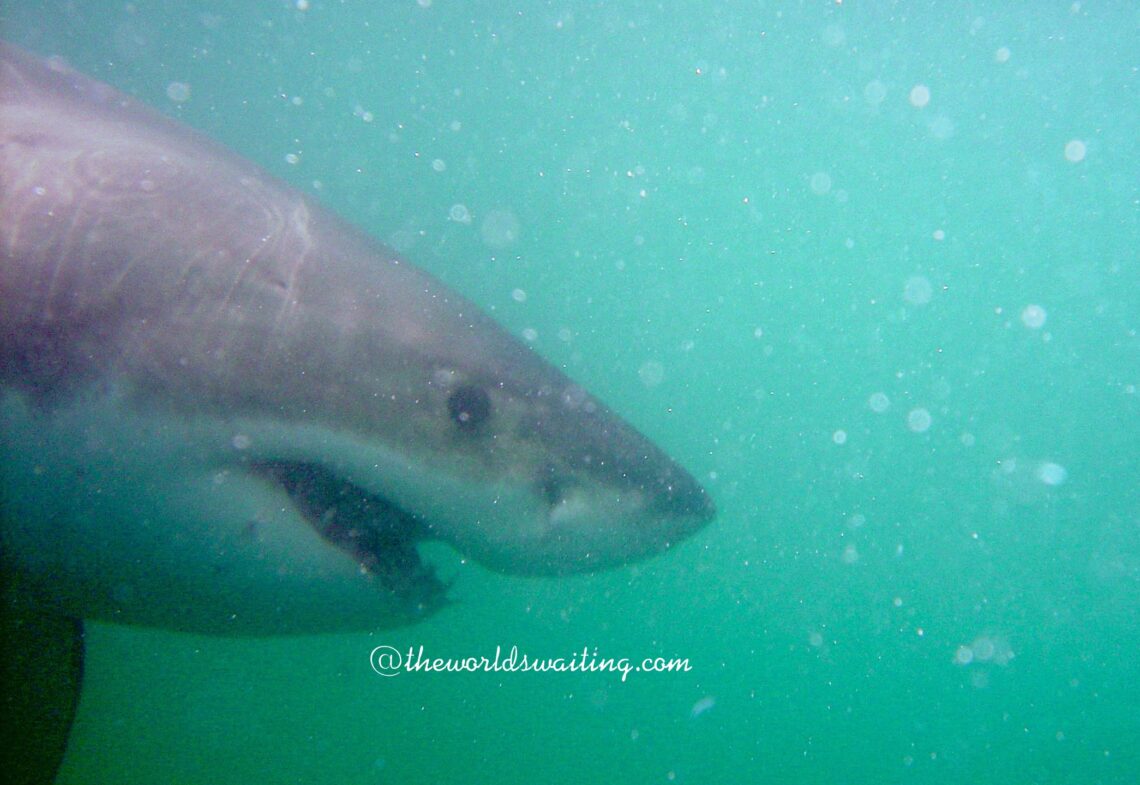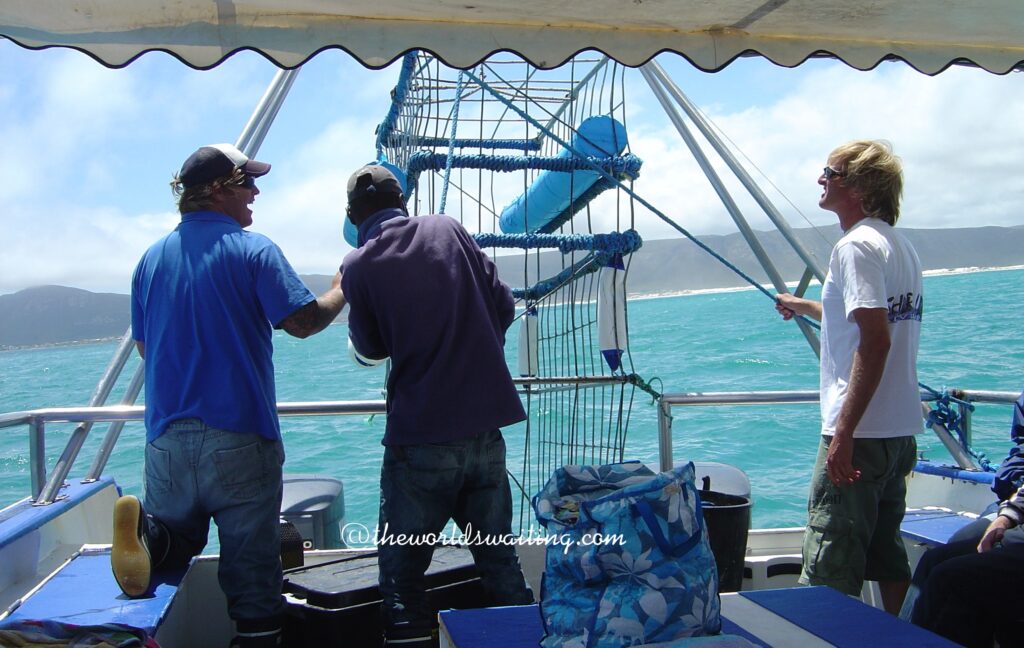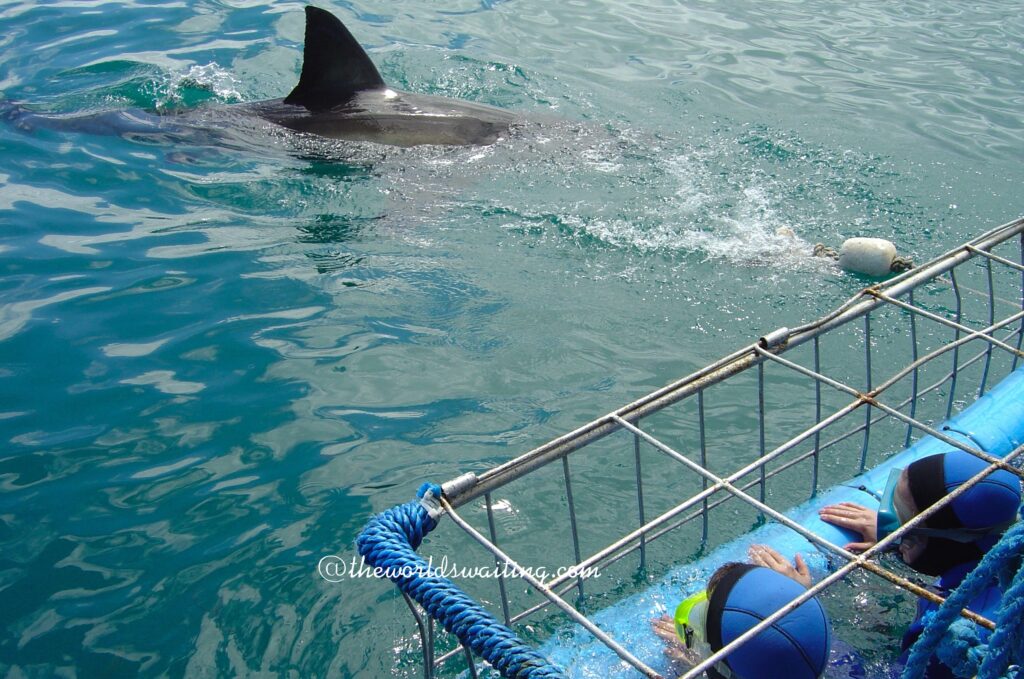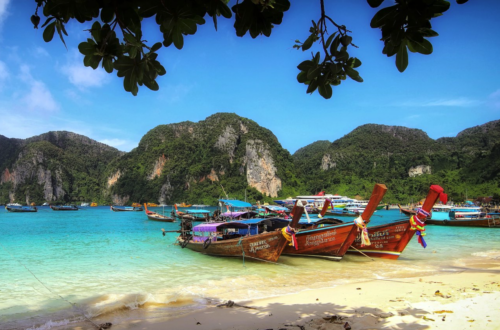
Cage Diving: How to cuddle a Great White Shark
Do you want to get up close and personal with an apex predator? Or do you think that people who do, like me, are crazy? If you’re keen but cautiously wondering what it involves, or perhaps not so keen, but still curious nonetheless, read on.
Magnificent Great White sharks can grow up to 6m in length and are most commonly seen off the West coast of the United States, South Africa and Australia. Cage diving businesses operate in all of these locations (more specifically Guadalupe Island off Baja California, Gaansbai in South Africa and Port Lincoln in South Australia). So if you’re keen for a close encounter with Jaws, head to one of these places.
Diving with the Great Whites was definitely on my agenda when a trip to South Africa came up and once I got to Cape Town I was quick to plan my appointment with Jaws. There are several companies offering cage diving with the Great Whites here. They all launch from Gaansbai which is a fishing village about two hours drive South East of Cape Town. Don’t ask me why the Afrikaaners named the place ‘Bay of Geese’. The dive company arranged a transfer from my hotel to their shop. Once there we were asked to complete various safety and liability forms signing our lives away, a standard, but not altogether reassuring start. We were then grouped together and given a talk about Great White sharks and a safety briefing, including all the details of what the day would involve, namely lots of hanging around on a small boat in choppy seas, waiting for and hoping that some sharks would come by. They reminded us that the star of the show can not be guaranteed to appear.
We boarded at the dock and headed out to sea. It was choppy. In fact it was very choppy (take heed if you suffer from seasickness). We hung on for dear life as our little boat made its way out into the shark-infested waters off Dyer Island. Were we all mad?

The boat journey took about twenty lurching minutes and once anchored, the staff rigged up the cage which hung attached to one side of the boat, mostly submerged but with about 30cm above the waterline. Another member of the crew started playing with a huge stinking bucket of chum. For anyone nervous or slightly queasy, being on a tiny boat with people being seasick around you might be bad enough, but that smell might be the final straw. If this might be you, keep well away from the chum bucket. A bit of blood and guts was tossed into the water and then the crew got us all into wetsuits and distributed masks. We sat and we waited. We got a bit hot in the thick wetsuits under the African sun. Sharks can sense blood from 5km away and their torpedo shaped bodies propel them through the water at speeds of up to 24km per hour. Where were they? Wasn’t our chum appetising enough? After about half an hour we could see a nearby boat had a visitor, but we didn’t yet.

Suddenly the captain started shouting and the crew jumped into action hurrying the first group of four people into the cage. This involved clambering onto the edge of the rocking boat and lowering yourself into the cage. You do not need to be able to dive, snorkel or even swim to take part but you do need to move fairly swiftly as the cage and the boat are rocking around remember and the longer you hesitate once on the edge of the boat, the higher your chances of getting fingers caught in-between the two or falling and giving yourself a nasty fright. You only need to hold your breath and pull yourself underwater within the cage for a good look at the sharks. Inside the cage there is a bar along the length of it at the bottom of the cage for you to hook your feet under to keep submerged (quite tricky when you are so positively buoyant in all that wetsuit and holding your breath). You keep your head above water until a member of crew shouts “Now!” then you take a deep breath and pull yourself under (or dip your face in if you’re feeling a bit timid) There is a long narrow open part of the cage at what they estimate is eye-level for most people, so that you can get a clear unobstructed view. I promise the sharks cannot get you through this ‘window’ as while I was in the cage one shark managed to push his snout into that window right in front of me (giving me the once in a lifetime opportunity to stroke him) but he couldn’t get far on account of his size and the narrowness of the gap he was stuck in momentarily until he thrashed his way free. I took my camera with me and can hold my breath for long enough that while I was happily taking photos, the other tourists in the cage pulled me back up as the crew on the boat were worried about me. If there are enough sharks and enough time you can have a second ‘dive’ in the cage, so don’t feel too put out if you feel your first dive was over quickly. The crew will initially rotate everyone fairly quickly to ensure that everyone gets a go.
I frequently tell people that sharks are far scarier in our imaginations than they deserve to be. Being so close to the business end of a Great White shark is scary. It is also a privilege though. These sharks are magnificent, but sadly they are also endangered. Is getting close to these fearsome sharks the ultimate lesson in conservation, or simply a thrill-seeking exercise? Whatever your personal feelings I can only mention quietly that it was the best thing I did in South Africa and I wholeheartedly recommend it, although perhaps not to aquaphobics or galeophobics. They’d only ruin it for everyone else.





4 Comments
John
Sounds fabulous! It’s definitely on my “things to do before I’m too old and decrepit” list. Love the blog, keep writing!
Liv
Thanks John!
My recent post Reasons to move to London
Debbie
We loved cage diving with Great White Sharks when we were in Africa. Such a cool experience! Thanks for sharing your experience!
My recent post Experiencing Robben Island In South Africa
Liv
Isn’t it just wonderful to see such impressive creatures up close? Glad you had fun.
My recent post Thailand’s favourite floating market